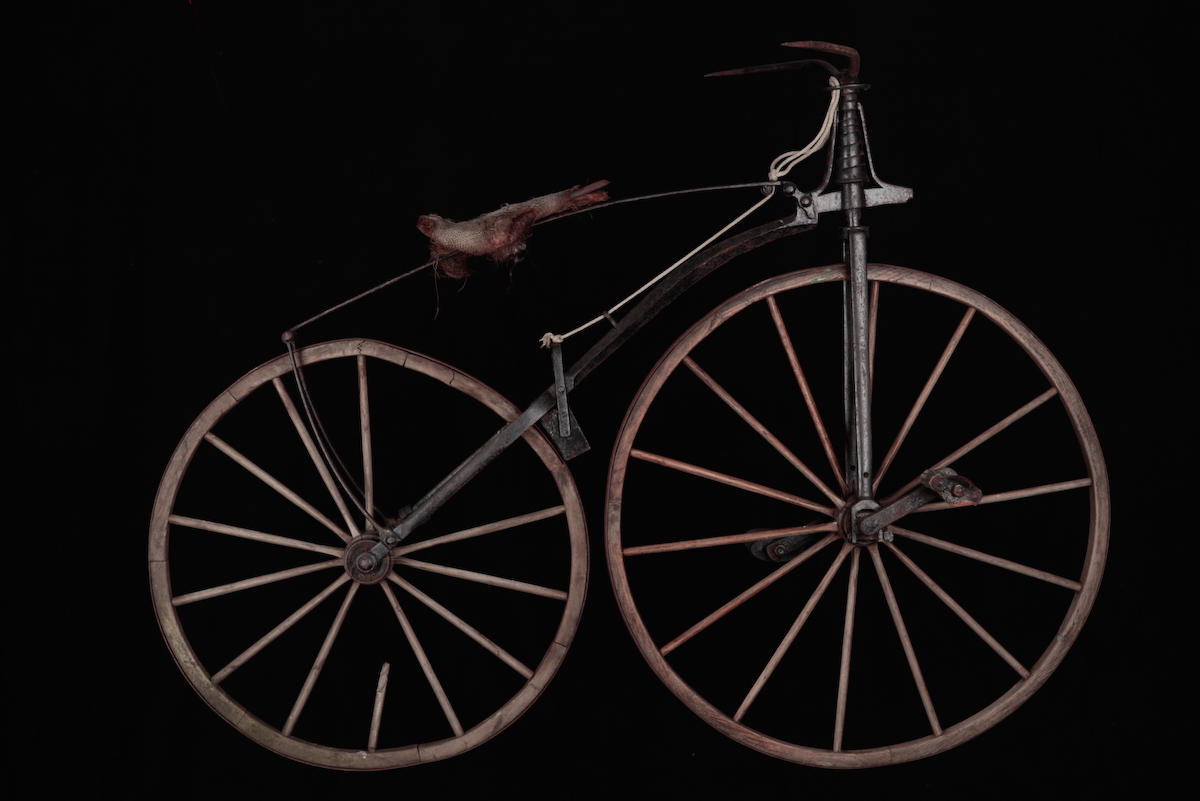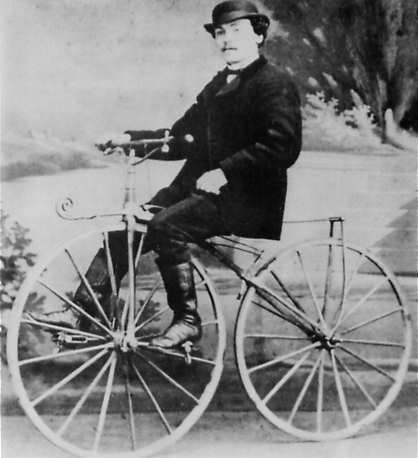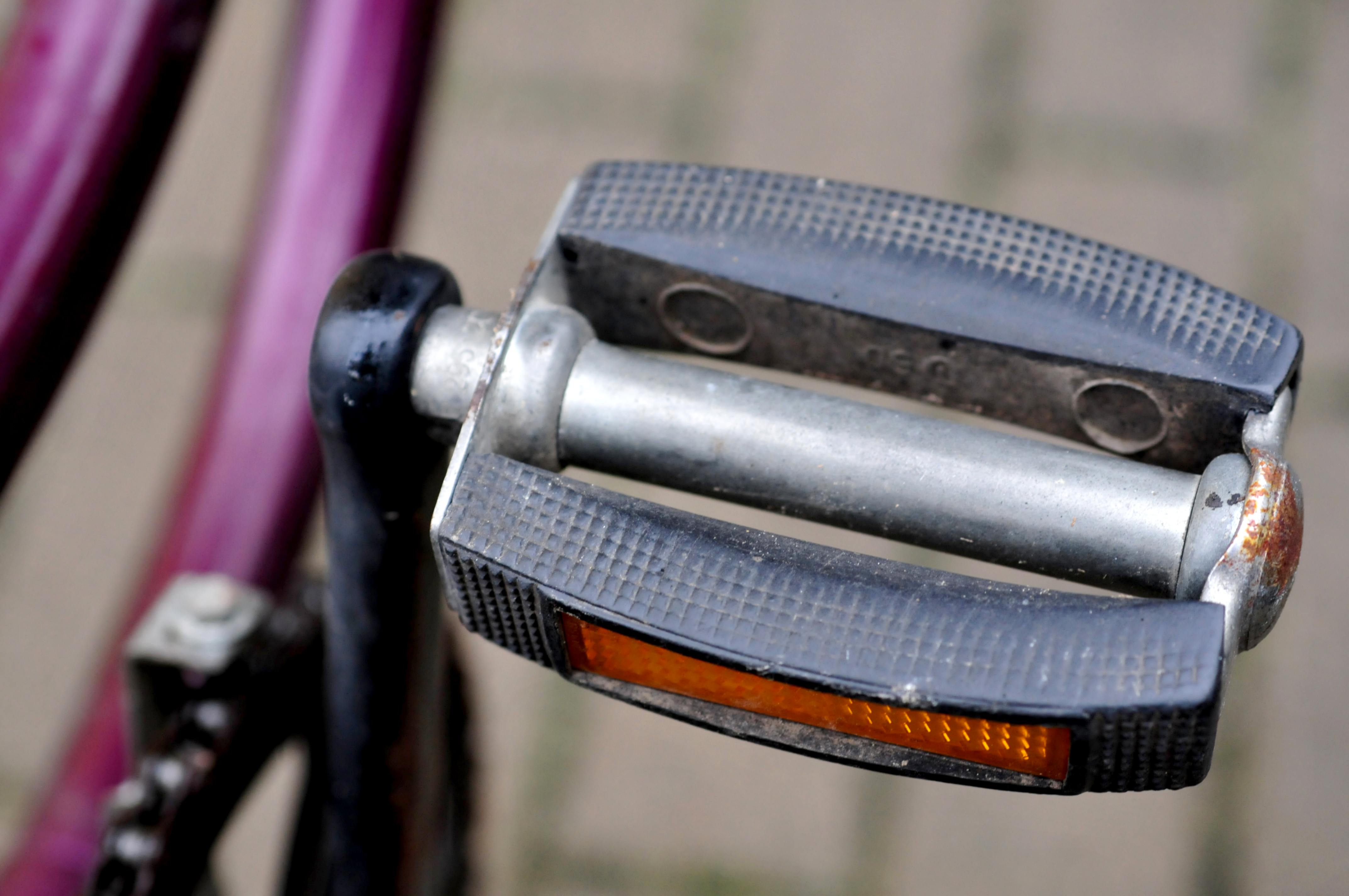|
Velocipedes
A velocipede () is a human-powered transport#Human-powered vehicles (HPVs), human-powered land vehicle with one or more wheels. The most common type of velocipede today is the bicycle. The term was probably first coined by Karl von Drais in French as ''vélocipède'' for the French translation of his advertising leaflet for his version of the ''Laufmaschine'', also now called a 'dandy horse', which he had developed in 1817. It is ultimately derived from the Latin ''velox'', ''veloc-'' 'swift' + ''pes'', ''ped-'' 'foot'.''Oxford Dictionary of English'', 'velocipede' The term 'velocipede' is today mainly used as a collective term for the different forerunners of the monowheel, the unicycle, the bicycle, the dicycle, the tricycle and the quadracycle developed between 1817 and 1880. Velocipede refers especially to the forerunner of the modern bicycle that was propelled, like a modern tricycle, by cranks, i.e. bicycle pedal, pedals, attached to the front axle before the invention of ... [...More Info...] [...Related Items...] OR: [Wikipedia] [Google] [Baidu] |
Société Parisienne
Société Parisienne (''Maison Parisienne'') was a French manufacturer of velocipedes, bicycles and tricycles from 1876. They began limited automobile construction in 1894 and regular light car (voiturette) construction in 1898 or 1899, and they ceased operation in 1903. The vehicles, variously known as Parisienne, Victoria Combination, Eureka, l'Eclair, Duc-Spider and Duc-Tonneau, were manufactured by Société Parisienne E. Couturier et Cie of Paris. The first attempt at vehicle manufacture in 1894 was planned to be powered by an 'air compressor' but it did not work. The first successful motor vehicles were Benz & Cie., Benzes built under license by M. Laboure of La Maison Parisienne. In 1898 the company engineer, a M. Serex, designed a flat-twin car which ran in the Marseille-Nice Race of that year; this, too, was built along the lines of a Benz. The 'Victoria Combination' voiturette achieved front-wheel drive by mounting the engine directly on the front axle and then turnin ... [...More Info...] [...Related Items...] OR: [Wikipedia] [Google] [Baidu] |
Unicycle
A unicycle is a vehicle that touches the ground with only one wheel. The most common variation has a frame with a saddle, and has a pedal-driven direct-drive. A two speed hub is commercially available for faster unicycling. Unicycling is practiced professionally in circuses, by street performers, in festivals, and as a hobby. Unicycles have also been used to create new sports such as unicycle hockey. In recent years, unicycles have also been used in mountain unicycling, an activity similar to mountain biking or trials. History US patents for single-wheeled 'velocipedes' were published in 1869 by Frederick Myers and in 1881 by Battista Scuri. Unicycle design has developed since the Penny Farthing and later the advent of the first unicycle into many variations including: the seatless unicycle (" ultimate wheel") the tall ("giraffe") unicycle and "2-wheelers" or "3-wheelers" (multiple wheels stacked directly on top of each other). During the late 1980s some extreme spo ... [...More Info...] [...Related Items...] OR: [Wikipedia] [Google] [Baidu] |
Pierre Michaux
Pierre Michaux (June 25, 1813 – January 10, 1883) was a blacksmith who furnished parts for the carriage trade in Paris during the 1850s and 1860s. He may have become the inventor of the bicycle when he added pedals to a draisine to form the Michaudine velocipede, the forerunner of the modern bicycle. However, historic sources reveal other possible claimants, such as his son Ernest Michaux and Pierre Lallement. History Pierre Michaux was born at Bar le Duc and worked as a blacksmith who furnished parts for the carriage trade in Paris during the 1850s and 1860s. He started building bicycles with pedals in the early 1860s. He, or his son Ernest, may have been the inventor of this machine, by adapting cranks and pedals on the front wheel of a draisine. In 1868, he formed a partnership with the Olivier brothers under his own name, Michaux et Cie ("Michaux and company"), which was the first company to mass-produce pedal-powered velocipedes, known as the Michaudine. The des ... [...More Info...] [...Related Items...] OR: [Wikipedia] [Google] [Baidu] |
Laufmaschine
The dandy horse, an English nickname for what was first called a Laufmaschine ("running machine" in German), then a vélocipède or draisienne (in French and then English), and then a pedestrian curricle or hobby-horse, or swiftwalker, is a human-powered vehicle that, being the first means of transport to make use of the two-wheeler principle, is regarded as the first bicycle. The dandy horse is a foot-propelled vehicle, powered by the rider's feet on the ground instead of the pedals of later bicycles. It was invented by Karl Drais (who called it a ''Laufmaschine'' "running machine" in 1817, and then patented by him in France in February 1818 using the term ''vélocipède''. It is also known as a ''Draisine'' ( in German, a term used in English only for light auxiliary railcars regardless of their form of propulsion), and as a ''draisienne'' ( in French and English. In English, it is also sometimes still known as a velocipede, but that term now also has a broader meaning. H ... [...More Info...] [...Related Items...] OR: [Wikipedia] [Google] [Baidu] |
L'Industrie Vélocipédique
''L'Industrie Vélocipédique'' (''Bicycle Industry'') was a French periodical that was published bi-monthly from 1882. It covered cycling (velocipeding) and described itself as ''The organ of manufacturers, mechanics, depositors, agents, renters, amateurs, etc.'' It was published from offices at 33 rue Jean Jacques Rousseau, Paris. By 1910 it had changed its name to ''L' Industrie Vélocipédique et Automobile''. The last recorded publication was 27 December 1913 by which time the title had evolved to ''L' Industrie Vélocipédique et Automobile, Revue technique Hebdomadaire'' (Fortnightly) The Independent organ of the Cycle, Automobile and Aeronautical industries. Cycling Publication market By 1903 the French market for cycling publications was large, energetic and crowded. Thus ''L'Industrie Vélocipédique'' had to compete with ''La Revue des Sport''; ''La Revue du Sport Vélocipédique''; ''Le Veloce-Sport''; ''Le Cycle''; ''Le Monde Cycliste''; ''La France Cycliste''; ... [...More Info...] [...Related Items...] OR: [Wikipedia] [Google] [Baidu] |
Cobblestone
Cobblestone is a natural building material based on Cobble (geology), cobble-sized stones, and is used for Road surface, pavement roads, streets, and buildings. Sett (paving), Setts, also called ''Belgian blocks'', are often referred to as "cobbles", although a sett is distinct from a cobblestone by being quarried and shaped into a regular form, while cobblestones are naturally occurring rounded forms less uniform in size. It has been used across various cultures for millennia, particularly in Europe, and became especially prominent during the medieval and early modern periods. Today, cobblestone streets are often associated with historic preservation and are used in many cities to maintain the historical character of certain neighborhoods. History as road surface During the Middle Ages, medieval period, cobblestone streets became common in many European towns and cities. Cobblestones were readily available, as they were often naturally occurring stones found in riverbeds ... [...More Info...] [...Related Items...] OR: [Wikipedia] [Google] [Baidu] |
Mass-production
Mass production, also known as mass production, series production, series manufacture, or continuous production, is the production of substantial amounts of standardized products in a constant flow, including and especially on assembly lines. Together with job production and batch production, it is one of the three main production methods. The term ''mass production'' was popularized by a 1926 article in the ''Encyclopædia Britannica'' supplement that was written based on correspondence with Ford Motor Company. ''The New York Times'' used the term in the title of an article that appeared before the publication of the ''Britannica'' article. The idea of mass production is applied to many kinds of products: from fluids and particulates handled in bulk (food, fuel, chemicals and mined minerals), to clothing, textiles, parts and assemblies of parts ( household appliances and automobiles). Some mass production techniques, such as standardized sizes and production lines, predate ... [...More Info...] [...Related Items...] OR: [Wikipedia] [Google] [Baidu] |
Olivier Brothers
The Olivier brothers, Aimé, René, and Marius, were among the first people responsible for recognizing the commercial potential of the bicycle. The Olivier family was wealthy, owning multiple chemical plants in France. The family were based in Lyon. While students in Paris in 1864, the brothers were among the first users of the ''velocipede''. In 1868, the Oliviers formed a partnership with Pierre Michaux Pierre Michaux (June 25, 1813 – January 10, 1883) was a blacksmith who furnished parts for the carriage trade in Paris during the 1850s and 1860s. He may have become the inventor of the bicycle when he added pedals to a draisine to form ... to mass-produce bicycles. All through one of the first bicycle crazes, from 1867 to 1869, it was René Olivier who led both the Michaux company and the industry as a whole. Then several major problems developed. The cast-iron frames would sometimes fail catastrophically. The relationship between the brothers and Michaud also bro ... [...More Info...] [...Related Items...] OR: [Wikipedia] [Google] [Baidu] |
Pierre Lallement
Pierre Lallement (; October 25, 1843 – August 29, 1891) is considered by some''New York Times'' accessed July 18, 2010 to be the inventor of the pedal history of the bicycle, bicycle. Early years Lallement was born on October 25, 1843, in Pont-à-Mousson near Nancy, France. In 1862 while Lallement was employed building baby carriages in Nancy he saw someone riding a dandy horse, a forerunner of the bicycle that required the rider to propel the vehicle by walking. Lallement modified what he had seen by adding a transmission (mechanics), transmission comprising a Rotary motion, rotary Crank (mechanism), crank mechanism and bicycle pedal, pedals attached to the front-wheel Bicycle wheel, hub, thus creating the first true bicycle. He moved to Paris in 1863 and apparently interacted with the Olivier brothers who saw commercial potential in his invention. The Oliviers formed a partnership with Pierre Michaux to mass-production, mass-produce a 2-wheeled velocipede. Whether these bicyc ... [...More Info...] [...Related Items...] OR: [Wikipedia] [Google] [Baidu] |
Bicycle Pedal
The pedal is the part of a bicycle that the rider pushes with their foot to propel the vehicle. It provides the connection between the cyclist's foot or Cycling shoe, shoe and the Crankset, crank allowing the leg to turn the bottom bracket spindle and propel the bicycle's wheels. A pedal usually consists of a axle, spindle that threads into the end of the crank, and a body on which the foot rest is attached, that is free to rotate on Bearing (mechanical), bearings with respect to the spindle. Pedals were initially attached to cranks connecting directly to the driven (usually front) wheel. The safety bicycle, as it is known today, came into being when the pedals were attached to a crank driving a sprocket that transmitted power to the driven wheel by means of a roller chain. Types Just as bicycles come in many varieties, there are different types of pedals to support different types of cycling. Flat and platform Traditionally, platform pedals were pedals with a relatively large ... [...More Info...] [...Related Items...] OR: [Wikipedia] [Google] [Baidu] |





